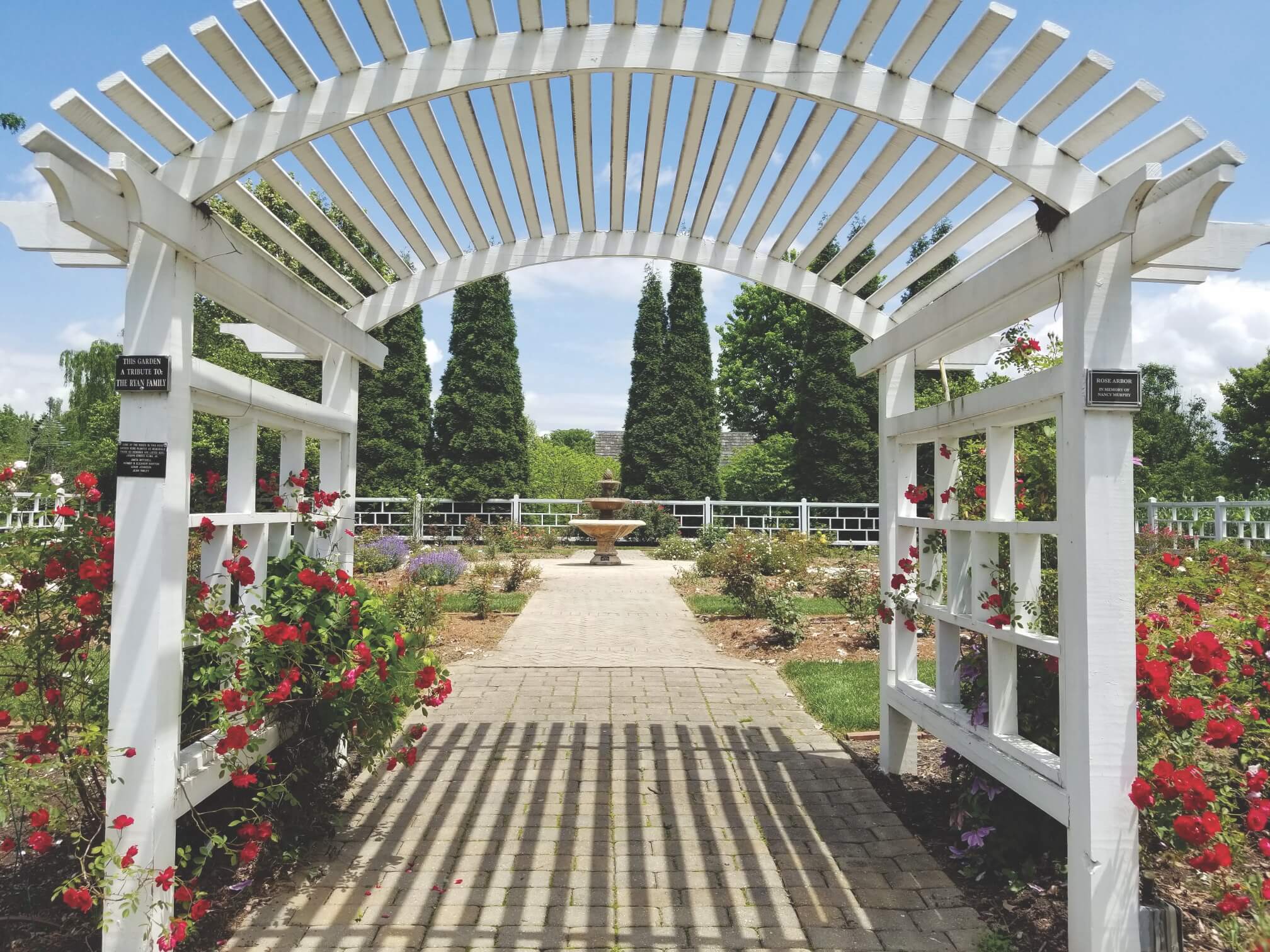A love for landscape

Arboretums, botanical gardens specialize in preservation and education
KENTUCKY’S ARBORETUMS AND BOTANICAL GARDENS boast green space with varied offerings, but they all have the same mission: to educate about native plants and instill a love for the state’s landscape.
A breath of fresh air
Just like plant life, Kentucky arboretums are always growing and changing. The Western Kentucky Botanical Garden in Owensboro has experienced tremendous change over the past few years, according to Executive Director Laurna Strehl. A new welcome center opened last March in a historic home dating to 1840.
“It’s been a ‘wow factor’ year for the garden,” Strehl says.
Strehl says visitor experience is her top priority. “The garden is a beautiful way to experience nature,” she says. “It’s an elevated experience because of so many different layers. It’s a tourist destination and an amenity to our community.”
Weddings, music classes and even memorial services are often hosted at the botanical garden. An annual free family fun day proved so popular that Strehl partnered with Independence Bank to bring it back more often this year. Now, on the first Saturday of the month from March to October, admission is free to the public.
The special events draw a crowd, Strehl says, but a visit to the garden is worth the trip any day of the week.
“I tell people to bring a book, pack a picnic, plan to spend the day and get a break from the world,” she says. “We want every visit to the botanical garden to be a good memory.”
Rooted in community
Events and classes are a core part of the programming at the Boone County Arboretum in Union. With a mobile environmental education lab and on-site classes, the arboretum, served by Owen Electric Cooperative, keeps the community engaged.
Curator Josh Selm says programs connect people to nature in tangible ways. A butterfly garden teaches how to plant for pollinators; a rain garden shows how to design the topography of a drainage area; and a demo by Owen Electric teaches what tree species are best for planting around overhead utilities.
“It’s like a natural history museum, but our exhibits are about living plants instead of fossils,” Selm says.
Arboretum staff members seek to educate, but they also play the role of protectors, Selm says. Plant life is susceptible to extinction just like animal life, and local arboretums can help stop that from happening.
“Green spaces are important because they focus on the preservation of native species and even some non-native species,” Selm says. “We keep those plants from going extinct.”
Appreciating the land
Arboretums and botanical gardens are separate designations, but they share several features. The Arboretum, State Botanical Garden of Kentucky in Lexington encompasses both. Director Molly Davis says an arboretum focuses on woody plants, trees, shrubs and vines. A botanical garden has those as well, along with herbaceous plants, perennials, annuals and more.
“Both are gardens that are open to the public, have professional staff and keep records of plants, just like items are curated in a museum,” Davis says.
At The Arboretum, a 2-mile paved path called Walk Across Kentucky enables visitors to experience 80 acres of wild-collected native plants. The Horticultural Gardens are broken into more specific categories like rose, fragrance, herb and vegetable gardens—all designed to stimulate the senses and provide inspiration, Davis says.
“I hope visitors come away with an increased appreciation for native Kentucky plants and are excited to even just start a pot of herbs on their balcony,” she says. “I’d like to ignite a passion for Kentucky’s landscape.”
That passion starts early with The Kentucky Children’s Garden. Children can get their hands dirty and their feet wet in the many garden beds, play areas and shallow creek in this 2-acre part of The Arboretum.
“The children’s garden helps our youngest citizens learn about environmental stewardship,” Davis says.
Regardless of a visitor’s age or region, Davis believes public green spaces foster an appreciation for the state’s unique environment.
“In Kentucky, you will find several arboretums and botanical gardens,” she says. “Every single one is different in some way, but all have in common that they are a great way to learn about Kentucky plants.”
The Arboretum, State Botanical Garden of Kentucky
500 Alumni Drive, Lexington
(859) 257-6955
Free admission, grounds open daily year-round, dusk–dawn.
Kentucky Children’s Garden: Admission $4 per person, 2 and under free; summer hours begin April 1, Wednesday–Saturday 10 a.m.–5 p.m.
Arboretum & Botanical Garden at Pritchard Community Center
404 S. Mulberry St., Elizabethtown
(270) 765-5551
Free admission, grounds open daily year-round.
Bernheim Arboretum and Research Forest
2075 Clermont Road, Clermont
(502) 955-8512
$10 per car recommended donation (members free), grounds open daily 7 a.m.–5 p.m. (upper area closes earlier); closed Thanksgiving, Christmas, New Year’s Day.
9190 Camp Ernst Road, Union
(859) 384-4999
Free admission, grounds open daily year-round, dusk–dawn.
Riverfront, downtown Munfordville
(270) 524-4752
Free admission, grounds open daily year-round.
Jeffers Bend Environmental Center & Botanical Garden
1170 Metcalfe Lane, Hopkinsville
(270) 885-5600
Free admission, grounds open daily year-round.
1435 Frankfort Ave., Louisville
(502) 276-5404
Free admission. Summer hours begin March 1, Wednesday–Saturday 10 a.m.–4 p.m.; Sunday noon–4 p.m.
Western Kentucky Botanical Garden
2731 W. 2nd St., Owensboro
(270) 993-1234
Admission $8 adults, $5 seniors and students, $2 children. Growing season hours begin March 1, Monday–Saturday 9 a.m.–4 p.m.; Sunday noon–4 p.m.
6220 Old LaGrange Road, Crestwood
(502) 241-4788
Admission: $9 adults, $5 seniors and youth (6–17), free for 5 and under and military, vets with ID. Summer hours begin March 25, Tuesday–Saturday 10 a.m.–4 p.m.; Sunday noon–4 p.m. (see website for holiday closures).

